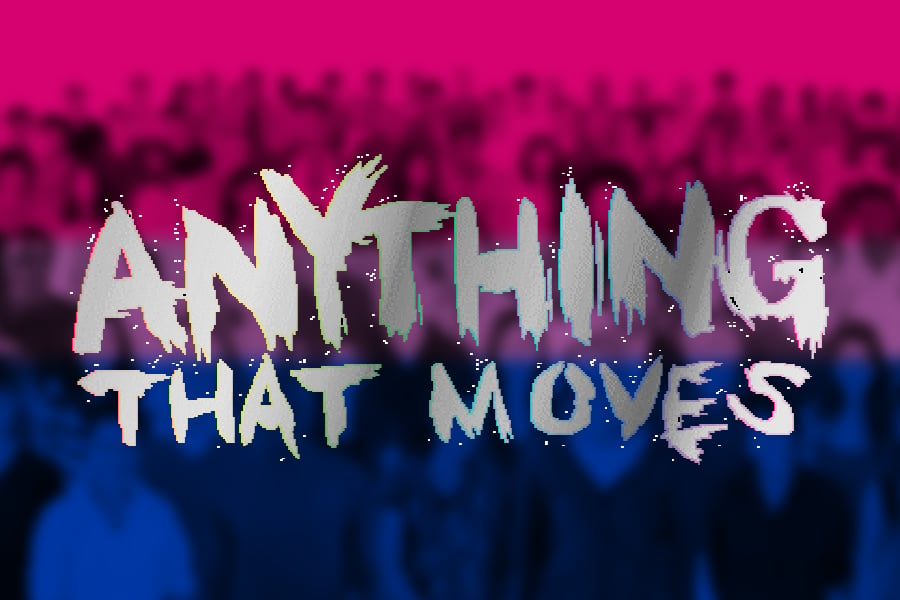I first came across “Anything That Moves” on a social media post intended to share pieces of queer history to read up on. It was labeled as a bisexual magazine, and though it had been discontinued, I was still curious about its influence on the community. And since paper copies of decades-old magazines are hard to come by these days, I had to settle for an online search to a digital archive of the magazine.
Running from 1990 to 2001 and based in San Francisco, Bay Area Bi+ & Pan Network started the magazine “Anything that Moves” to combat biphobia and harmful stereotypes. During the 80s and 90s, when bisexuals were largely ignored or spoken over by the wider LGTBQ+ community (too queer for straights and too straight for queers), the magazine offered a listening ear and a crucial voice for bisexuals by showcasing articles and letters from the bisexual community.
On the first page of every magazine issue is the bisexual manifesto. Its first line acknowledged how “[their] choice to use this title for the magazine has been nothing short of controversial.” Below it, the editors stated their intention of addressing and redefining the stereotype that “bisexuals will fuck anything that moves,” reclaiming the phrase to empower bisexuals. The manifesto went on to define bisexuality as a “whole fluid identity” and loudly proclaimed their anger at the constant stigmatization of their sexuality. The bold declaration, put at the front and center of a magazine, very clearly sets the tone for the queer radicalism of the coming issues.
The magazine didn’t only focus on bisexuality. It published articles that sought to give voices to other marginalized groups such as the transgender and sex worker communities. One article stated it was only logical to include gender politics in their agenda because it is the nature of the bisexual movement “to break down dichotomies, [and create] a powerful and diverse body of queers to smash the heterosexual monolith.” Another noted that sex workers engaging in bisexual behavior was “practically a job requirement” for them and showed support for decriminalizing prostitution.
While “Anything That Moves” promoted empowerment and rising up against stereotypes, I think the biggest impact the magazine had was the sense of community it fostered. As I was scrolling through the 22 total issues of the magazine, I felt an odd sense of connection, even if it was to articles and letters written over 20 years ago, from people I’d never even met. Each column felt like advice, written and passed down, from one bisexual person to another.
Countless letters were mailed in, showing appreciation for the community and the connection fostered by the magazine. One reader took the time to write from Hungary, telling the editors how the magazine kept them feeling connected to the community, even after moving away. Another wrote a simple letter, thanking the magazine for “[helping] a small-town bi realize that she isn’t alone in the world.”
In 2020, members from the LGBTQIA+ community began their mission to archive every single issue of the magazine. They aimed to make this niche, historically significant magazine available and free to read for the public.
These days, most queer communities are fostered online, and while it does allow you to connect with more people, there’s something to be said about participating in a local queer community. It allows for closer connections and a feeling of belonging in a tangible space; the magazine offers a glimpse into that same community through the lenses of the past. By reading through, you are reminded of the steps taken in this space and others in overcoming biphobia.
While I cannot deny the invaluable advantages of archiving a magazine like this online, there is something special about the feeling of flipping through a paper copy of the magazine in your hands. I would have loved to hold a piece of history — it’s eye-opening to be able to revisit a piece of media that helped and impacted a large part of the queer community.
